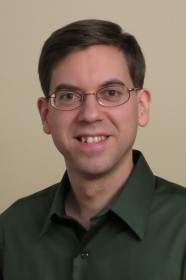
10:30 am to 11:30 am
Event Location: NSH 1507
Bio: Dr. Ron Alterovitz is an Assistant Professor in Computer Science at the University of North Carolina at Chapel Hill. He leads the Computational Robotics Research Group which investigates new algorithms to enable robots to safely and autonomously complete novel tasks in clinical and home environments. Prior to joining UNC-Chapel Hill in 2009, Dr. Alterovitz earned his B.S. with Honors from Caltech, completed his Ph.D. at the University of California, Berkeley, and conducted postdoctoral research at the UCSF Comprehensive Cancer Center and the Robotics and AI group at LAAS-CNRS (National Center for Scientific Research) in Toulouse, France. Dr. Alterovitz has co-authored a book on Motion Planning in Medicine, was co-awarded a patent for a medical device, and has received multiple best paper finalist awards at IEEE robotics conferences. He is the recipient of an NIH Ruth L. Kirschstein National Research Service Award, the UNC Computer Science Department’s Excellence in Teaching Award, and an NSF CAREER award.
Abstract: Emerging robots have the potential to improve healthcare delivery, from enabling surgical procedures that are beyond current clinical capabilities to autonomously assisting people with daily tasks in their homes. In this talk, we will discuss new algorithms to enable medical and assistive robots to safely and semi-autonomously operate inside people’s bodies or homes. These algorithms must compensate for uncertainty due to variability in humans and the environment, consider deformations of soft tissues, guarantee safety, and integrate human expertise into the motion planning process.
First, we will discuss how our new algorithms apply to two recently created medical devices for neurosurgery and cardiothoracic surgery: steerable needles and tentacle-like robots. These new devices can maneuver around anatomical obstacles to perform procedures at clinical sites inaccessible to traditional straight instruments. To ensure patient safety, our algorithms explicitly consider uncertainty in motion and sensing to maximize the probability of avoiding obstacles and successfully accomplishing the task. We compute motion policies by integrating physics-based biomechanical simulations, optimal control, parallel computation, and sampling-based motion planners. Second, we will discuss how our new algorithms apply to autonomous robotic assistance for tasks of daily living in the home. We will present demonstration-guided motion planning, an approach in which the robot first learns time-dependent features of an assistive task from human-conducted demonstrations and then autonomously plans motions to accomplish the learned task in new environments with never-before-seen obstacles.
Research group web site: http://robotics.cs.unc.edu
